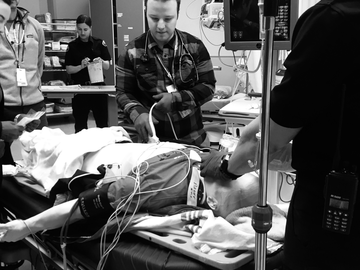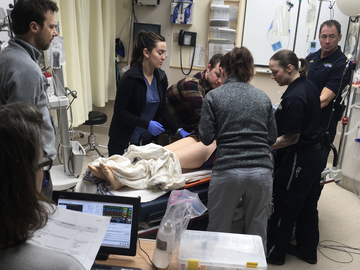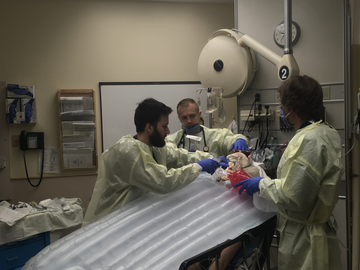June 3, 2019
Building a SIM Program from the Ground Up

What does it take to set up a dynamic rural SIM program? Born as a small initiative featuring code blue drills, ski patroler skills and general outreach, the Banff Simulation Program evolved into an interprofessional-led, collaborative simulation, facilitated and attended by multiple stakeholders in the area.
Distributed Learning and Rural Initiatives spoke with Natalie Palmer (RN, BN, MN), who has been working in the Banff Mineral Springs Hospital for 16 years. She discusses how integral the program has been to Banff and the role of SIM in rural communities.
How has developing a SIM program been important to Banff?
The SIM program allows us to build unique partnerships in the community while identifying gaps in knowledge, developing equipment process, and defining procedures. It generally makes everything run more smoothly and focuses on team interaction. There are multiple participants including students, fire chiefs, pharmacists, physicians, nurses, medics, and potential new hires. The relationships that are built have a strong impact on serving the community.
How has the SIM program engaged learners and staff?
Medical learners get valuable real-time experience through the program, and get to use their own equipment in their own space; it’s practical experience and application. The hands-on experience they get is a valuable addition to textbooks and lectures. Staff are given the chance to practice their leadership and facilitation skills, and test their knowledge. If you can teach it, you know it.
How has Banff made use of DLRI grants to support the program?
Through the funding provided by DLRI, we were able to buy equipment, develop training, and a specialized debriefing course on Kids SIM. The Kids SIM program is internationally recognized, known for delivering top-notch educational programs and conducting cutting-edge research.
What do you think the role of SIM is in rural communities?
At times rural locations have to work with limited resources and staff, and anyone who works in a rural environment has to be a 'jack of all trades'. Because of this, team functionality and being prepared for rare serious events are critical. The simulation environment gives us the opportunity to practice in a safe space. This could be anything from trauma, to cardiac, to pediatric, but the objective isn’t always medicine. We practice how to transport the patient, who is taking care of them at what time, and other team directives.
The simulation environment gives us the opportunity to practice in a safe space. This could be anything from trauma, to cardiac, to pediatric, but the objective isn’t always medicine.
What would you say to a rural community who is just getting started with SIM?
Start small. Start with training and developing a good base of understanding; it does not have to be high-tech at all. Debriefing is at the core of what makes a good simulation. Develop this first and build upon your foundation.
Visit the below link for resources, courses, conferences and more on simulation.






